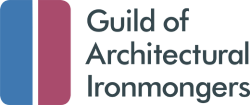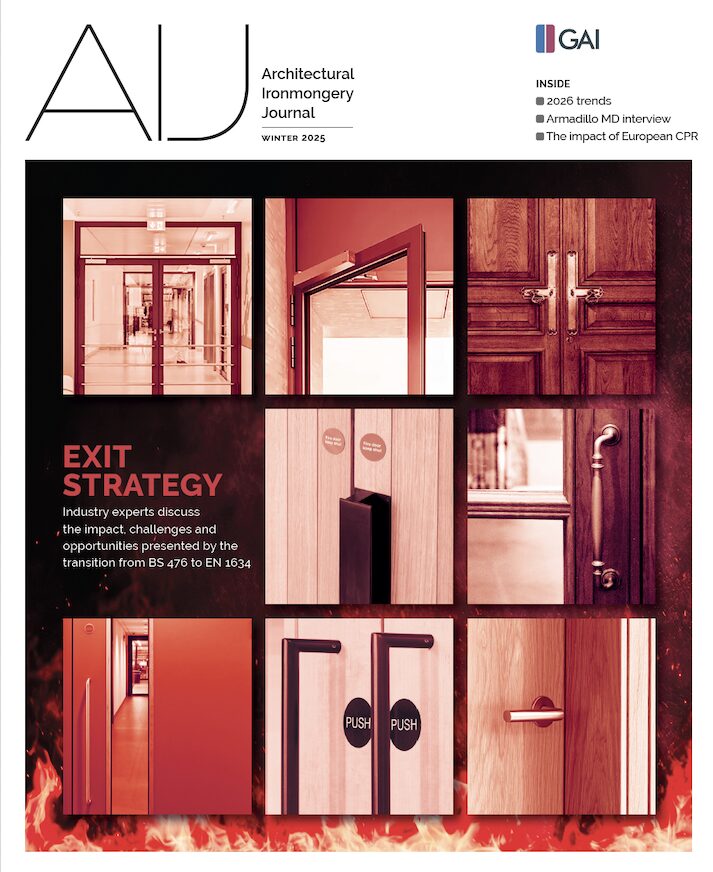Paul Nicholas at Abloy UK discusses the importance of escape door compliance in schools, and specifying the correct electronic access control solution to ensure life safety.

Safeguarding students, staff, and visitors in schools is a top priority, however, one crucial yet often overlooked aspect is ensuring the compliance of escape doors. There are many reasons why a school may want to restrict movement across a facility.
Controlling the misuse of perimeter escape doors and the need to prevent pupils and students from having completely free movement in and out of buildings is an understandable requirement, but compliance must always be maintained. Escape doors make up a significant proportion of school doors, with classrooms, offices and final escape doors often forming part of the escape route plan.
The purpose of an escape door is to allow free egress for all persons at any time, allowing swift evacuation in the event of an emergency. These types of doors in schools are more than just an exit in the case of fire – they are a lifeline during emergencies involving chemicals, intruders, or other critical threats.
Therefore, failure to meet fire safety and escape regulations poses significant risks, including the loss of life. But, with the increasing integration of electronic access control systems, many schools are inadvertently compromising the compliance of these doors.
Compliance challenges
Often, when a school introduces electronic locks and access control, the specific requirements for maintaining escape door compliance are not followed. What was previously a compliant escape door can very easily become non-compliant because of incorrect electronic locking choices.
A simple error, such as adding electronic locks without maintaining mechanical escape mechanisms, can transform a previously compliant door into a hazard. Therefore, when electronic access control is deployed, it is critical to understand how to maintain compliance, for life safety.
The Fire Safety Order 2005 places legal responsibility on those with day-to-day control of a building, often the head teacher, to ensure that fire safety standards are met. Escape doors, forming an essential part of an emergency evacuation plan, must comply with BS EN 179/1125/13637 to ensure all users can exit the premises efficiently in an emergency.
With better awareness of the standards and legislation relating to the compliance requirements, we can limit the risk of non-compliant solutions being adopted and therefore maintain the welfare of all.
Implementing compliant electronic access control
When schools implement electronic access control systems, especially on perimeter doors or key internal doors, maintaining compliance can be complex and challenging.
Non-compliant solutions, such as electrically powered magnetic locks (known as maglocks) require additional electronic switching, which could turn escape routes into potential bottlenecks. If mechanical escape functions, like panic bars or handle mechanisms, are removed or bypassed, it endangers the safety of all building occupants.

An escape door should be controlled and remain controlled by a mechanical handle or bar mechanism fitted to the door in the direction of escape. If the escape door is fitted with electronic access control, then the mechanical means of escape needs to be maintained, and only the entry side of the door should be electronically controlled.
An escape door should not be fitted with electronically controlled Entry and Exit readers unless compliant to BS EN 13637. Failure to comply, could prohibit escape by persons without a means of operating the doors.
Technology has made significant advances in managing school safety, and solutions like intelligent keys and wireless handles can provide flexibility and security while maintaining compliance.
Intelligent keys, for instance, offer mechanical and electronic functionality, allowing for real-time access adjustments without the need for extensive cabling or door alterations. This not only reduces installation costs but also ensures that lost keys no longer pose a security risk, as they can be easily deactivated.
Additionally, camera-enabled door entry technology enables schools to manage visitor access through live video and audio, offering a complete, secure visitor management system.
Guidance and education
Maintaining escape door compliance is an ongoing responsibility that evolves as regulations and technologies change. At Abloy UK, we are committed to raising awareness about the importance of escape door compliance and helping educational institutions meet these stringent legal requirements.
Our initiative, REVIEW (Responsibility, Education, Verification, Inspection, Expertise, Ways and Means), focuses on delivering expertise and practical support to those responsible for building safety, particularly school head teachers and facility managers.
We also provide a range of CPD-accredited training programs through the Abloy Academy, ensuring that the relevant responsible personnel remain up to date on the latest safety standards and practices. From the basics of BS EN 179, 1125, and 13637 compliance, to advanced courses in electronic access control, we provide the tools and knowledge required to meet and exceed regulatory requirements.
Guidance and assessment services are also available to help schools navigate these complexities. Our free on-site assessment provides a clear report on your school’s current compliance status, while our comprehensive training equips your team with the necessary knowledge to ensure compliance is maintained over time.
Ultimately, escape door compliance is not just a regulatory checkbox, it is a life safety issue. Ensuring that your school meets the highest safety standards protects lives and embeds trust within your school community.
We encourage school leaders to take a proactive approach to maintaining safety standards. With the support of training programs, advanced technological solutions, and on-site assessments, schools can ensure their facilities remain compliant, safeguarding both the well-being of students and the institution’s reputation.
For more information or to arrange an assessment, visit our dedicated page on escape door compliance in schools:








